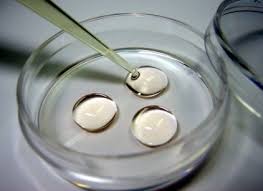Do You Know the Fundamental Harm of Tubal Effusion?
As we all know, after the fallopian tube is infected with the pathogen, the infiltration of leukocytes forms intimal swelling, interstitial edema, and exudation, and the mucosal epithelium of the fallopian tube falls off. If the inflammation of the fallopian tube is not treated in time and effectively, the tubal empyema is formed.
What is the main reason for tubal effusion?
Most of the tubal effusion is caused by childbirth, miscarriage, unclean sexual intercourse or bad menstrual hygiene and inflammation after gynecological surgery. It can also be caused by inflammation of adjacent organs, such as appendicitis and peritonitis.

1. Unclean sex, too much sexual activities or sexual intercourse during menstruation, may cause infection and fallopian tube inflammation, resulting in tubal effusion.
2. Improper abortion and childbirth, and postpartum, post-abortion and post- menstruation - these are particular phase when attachment infection occurs, where adhesion and atresia, secretion of mucosal cells accumulate in the lumen, or oviduct inflammation occurs in the isthmus and umbrella end, the fallopian tube lumen leakage and exudate gradually gather, resulting in effusion of the fallopian tube.
3. Adjacent organ infection: infection caused by inflammation of surrounding tissues and organs, usually genital inflammation such as cervicitis, endometritis and other retrograde infections. Can also be seen in suppurative appendicitis, peritonitis extended to the pelvic genital organs such as the fallopian tube.
4. When chronic salpingitis occurs, the distal end of the fallopian tube can be blocked by inflammation, and the leakage exudate in the lumen of the fallopian tube gradually accumulating to form stagnant fluids.
5. Some hydrosalpinx is also converted from tubal empyema. The pus cells and necrotic tissues in the lumen are decomposed and cleared by phagocytic cells, and the pus gradually turns into a clear liquid sample. There are also hydrosalpinx caused by inflammation of the fallopian tube, but secondary to tubal sterilization.

Now let's talk about two treatment options that are commonly used in clinical practice.
1. Antibiotic treatment should be applied topically, and side closure can be used.
Antibiotic lateral fornix closure: According to the condition of the disease daily or every other day, 7 to 8 times for a course of treatment, if necessary, can be repeated after the next menstruation, usually 3 to 4 courses. It is also possible to add dexamethasone or prednisolone at the same time.
2. Surgical treatment.
Fallopian tube ostomy is suitable for patients with proximal tubal patency and effusion and atresia at the distal end. Laparoscopic tubal ostomy surgery first fully frees the adhesion of the fallopian tubes to other tissues. Through the cervix, the fallopian tube is irrigated, so that the distal end of the fallopian tube is covered with a large end, and the fallopian tube is fixed to the uterine fundus with a non-invasive grasping forceps. Use a carbon dioxide laser or micro-scissors as a cross-cut as far as possible in the original fallopian tube opening.

If the original opening is unrecognizable, the cross-shaped incision can be made in the avascular zone at the thinnest part of the fallopian tube wall. Place the gripper into the incision repeatedly and open it several times until the incision is satisfactory. The direction of the incision is oriented as far as possible toward the ovary so that it can be picked up later. But any surgery can be risky, we should avoid it if we can.
And although antibiotic treatment is popular, too many antibiotics tend to cause drug resistance, so we recommend natural treatment, starting from the overall regulation of the internal environment.
Such as Fuyan Pill, the raw material components of the medication are mainly Bupleurum, Poria, Astragalus, wolfberry, Atractylodes, Yam, Angelica and so on. Bupleurum and Poria can be used to evacuate and reduce heat. Yam and Angelica can promote blood circulation and unblock blood stasis. Along with other over 50 kinds of herbs which eliminate inflammation, detox, repair the damaged tissues, Fuyan Pill can overall heal the fallopian tube and restore the reproductive system.
Testimonials
- Adenomyosis with Ureaplasma Urealyticum Cured by Fuyan Pill
- Tubal blockage with hydrosalpinx can be cured by TCM shortly
- Fuyan Pill Helps A woman with Adenomyosis Get Pregnant
- A Woman with Hydrosalpinx Is Cured with Fuyan pill
- Pelvic Inflammatory Disease Testimonials
- Irregular Vaginal Bleeding and Endometrial Thickening Cured by Fuyan Pill
- Pruritus Vulvae and Frequent Urination: Mycoplasma Infection Cured after 2 Courses



